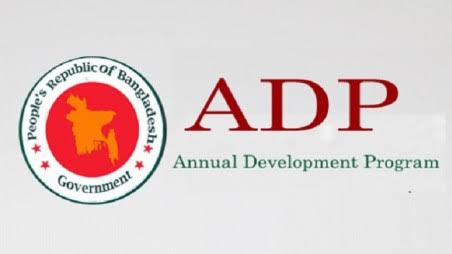Staff Correspondent
Published:2025-08-20 00:23:14 BdST
ADP implementation hits 7-yr low in July
Bangladesh’s Annual Development Programme (ADP) has stumbled at the very start of the 2025–26 fiscal year, with July implementation reaching only 0.69% (Tk1,644.66 crore), the lowest rate in several years, according to official data from the Implementation, Monitoring and Evaluation Division (IMED).
The dismal performance marks a sharp decline from the 1.05% or Tk2,922.36 crore achieved in July 2024 and the 1.27% or Tk3,489.09 crore recorded in July 2023.
Apart from July 2019, when implementation stood at just 0.57%, the latest figure represents the weakest beginning to an ADP cycle in over half a decade.
In July, government-funded projects absorbed Tk726 crore (0.51%), foreign aid-supported projects accounted for Tk838 crore (0.97%), and state-owned enterprises spent Tk78 crore (0.90%) of their own funds.
The ADP for FY2025–26 has a total allocation of Tk238,695.64 crore, including Tk144,000 crore from the government’s own resources and Tk86,000 crore in foreign loans. This year’s programme is notably smaller than last year’s original allocation of Tk278,289 crore, later revised down to Tk226,165 crore after poor execution.
Planning Adviser Wahiduddin Mahmud expressed disappointment over the sluggish start, warning that excuses for low implementation would no longer be acceptable.
“This is lower than the previous year; this is not a good sign,” he told reporters after the ECNEC meeting on Sunday.
“Last year, the lower implementation rate had acceptable reasons. This year, implementation was supposed to accelerate. That hasn’t happened,” he added.
He attributed the poor performance partly to delays caused by transfers of project directors and contractors. “Many projects are yet to gain momentum,” he said, but insisted that ministries must expedite work.
To avoid a repeat of past years, when implementation surged only in the final quarter, Wahiduddin Mahmud announced that the ADP revision would take place earlier, in December-January instead of March-April, to ensure smoother progress.
The July performance comes on the heels of a record-low annual ADP implementation rate of 67.85% in FY2024–25, the lowest in at least two decades. Out of a revised allocation of Tk226,165 crore, only Tk153,450 crore was spent, compared with an 80.63% implementation rate the year before.
The downturn highlights deeper structural challenges, including bureaucratic inertia, frequent transfers of project leadership, inadequate capacity of contractors, and persistent delays in fund disbursement.
Analysts warn that continued underperformance risks undermining Bangladesh’s development priorities at a time when the economy is already under strain from energy shortages, high inflation, and external financing pressures.
While the government deliberately downsized this year’s ADP to make it “realistic,” poor early execution raises doubts about whether even the scaled-down plan can be implemented in full.
An economist noted the danger is that slow-moving projects pile up, revisions are pushed forward, and ministries rush to spend at the end of the year-often compromising quality in the process.
Official figures show that 12 ministries and divisions- including the Ministry of Water Resources, Health Education and Family Welfare Division, Ministry of Religious Affairs, Public Security Division, Ministry of Chittagong Hill Tracts Affairs, Ministry of Liberation War Affairs, Ministry of Defence, Ministry of Foreign Affairs, IMED itself, Bangladesh Public Service Commission, Anti-Corruption Commission, and the Parliament Secretariat-did not spend a single taka in July.
Another 13 ministries and divisions, such as the Ministry of Shipping, Primary and Mass Education, Security Services Division, Internal Resources Division, and the Ministries of Social Welfare, Public Administration, Commerce, Rural Development and Cooperatives, Textiles and Jute, Information and Broadcasting, Cultural Affairs, Financial Institutions Division, and Planning (Development Allocation), implemented less than 0.10% of their allocations.
However, the Ministry of Food topped the chart with 11.30% implementation, followed by the Cabinet Division (7.05%), Madrasah Education Division (4.46%), Ministry of Science and Technology (3.56%) and Ministry of Labour and Employment (3.51%).
Unauthorized use or reproduction of The Finance Today content for commercial purposes is strictly prohibited.


